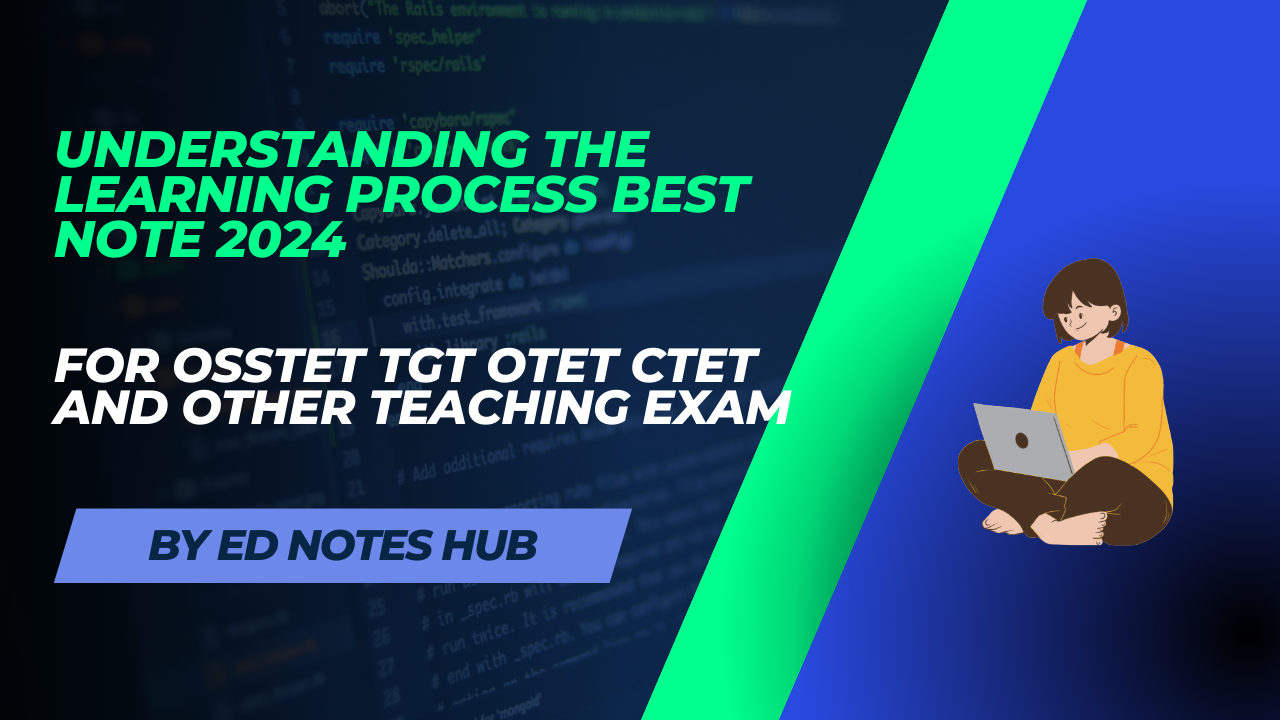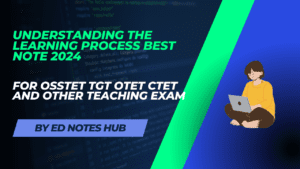Physical Address
304 North Cardinal St.
Dorchester Center, MA 02124
Physical Address
304 North Cardinal St.
Dorchester Center, MA 02124


Learning can define as change or modification of behavior.
It is the process of acquiring new knowledge, behavior, skill value through experience and observation. Inborn capabilities of every creature including human is called instinctive behavior.
learning outcomes are observable and measurable as it reflects in someone how they acquire knowledge and behaviour in a certain period of time.

Input: Learner perceives or develops ideas of what to be done.
Processing: How we put information into response
Output: Move or movement
Feedback: coach is important asked to proceed further, cycle start again.
It is the expectation about what a learner able to achieve something after the completion of certain task, it is the description of what learners should know understand and able to do as a result of learning.
According to Murray, “learning outcomes are specific statement of what students should know and is able to do as the result of learning”.
.It is action oriented
. It is learner centered, it clear cut what a learner should do and achieve.
. It is goal oriented and clears the pathways to achieve goal
. Align course content and assessment
. It is realistic and achievable task
. It is according to learning taxonomies
. permanent change in Behavior
. Universal
.Adjustment
.Continuous
.Transferable
.Modification as a result of experience
. Purposive
Gates, “learning is the modification of the behaviour through experience and training”.
Woods birth, “the process of acquiring new knowledge and a new response is the process of learning”.
Morgan, “learning is the behaviour of the Organism as a result of experience which is retained for at least a certain period of time”.
Skinner, learning is process of progressive behaviour adaptation
Crown Bach, “learning is shown by a change in the behaviour as a result of experience”.
Crow and Crow, ‘learning is the acquisition of habits, knowledge and attitudes”.
Thorndike, “learning is selecting the appropriate responses and connecting it with the stimulus”.
Henry P Smith, “learning is the acquisition of new behaviour of strengthening or weakening of old behaviour as a result of experience.
Gardener, “learning covers every modification of behaviour to meet environmental requirements”.
Kingsley, “learning is the process by which behaviour is originated or changes through practice and training’.
Teaching is a professional activity and aims to achieve the goal of an individual
According to Gage, “teaching is a science to describe elements of predictability”.
The task of teaching is to provide knowledge and help children to achieve their potential.
Fleming VARK model of learning
VARK stands for Visual Auditory Reading and Kinaesthetic.
. Visual: Use of images, graphs, maps to organise and construct knowledge.
. Auditory: Understanding concept through listening and speaking.
. Reading: Translation of abstract concept into words and essays.
. Kinesthetic: Understanding information through tactile objects.
learners learn better if it taught in a method appropriate for them.
When we teach someone or transfer information to someone to develop their knowledge and cognition the learning is transferred.
According to the Thorndike, “theory of identical elements states that the transfer of learning can be carried over from one situation to another”.
According to Judd, “transfer of learning is nothing but a generalization”. According to that one who have mastery knowledge can transfer that to other.
Hilgard suggest that, “transfer of learning possible when a person develops ability of finding out identity or relationships”.
Positive transfer: When transfer occurs when acquisition of type facilitates another type. It is one activity makes learning of other activity easier.
E.g. pedaling of tricycle can make easier in riding bicycle at first.
Negative transfer: when transfer put hindrance to subsequent task such a type of transfer is called negative transfer.
e.g. continue to write previous year while steps to another year
Dialing wrong number after the change of number that is remembered first
Readiness
Construction of knowledge and learning is an active process, so a learners should be ready to acquire knowledge at the time of transferring it.
. For activeness of students should maintain,
. Healthy diet
. Proper sleep
. Avoiding cold drinks and beverages.
. Arrangement of study time
. Proper schedule.
The role of teacher and parent with important in regulating those condition. Illness, laziness, exhausted may affect in learning process.
Factor Affecting readiness of a student
. Physical: Physical strength and weaknesses, defective organ, illness may affect learning
. Cognitive: Based on the cognitive standard learning affected.
. Environment: Environment plays a crucial role in maintain readiness of students noisy environment can impact the learning process.
. Emotional state: If a child is not emotionally stable than learning affected.
According to Hurlock, “maturation is the unfolding characteristics potentially present in the individual that comes from the individual genetic endowment while learning is development that comes from exercise and effort”.
It is a natural process and associated with normal growth, it is essential for learning skills attending maturity essential in learning new skills.
Motivation plays a vital role in process of learning, it is very important for a learner to reach their goal.
According to Dennis child, “motivation is what moves from boredom to interest. it is something like the engine and steering wheel of automobile”.
According to Keller, “motivation is a process that Lerner meet some needs”.
According to Gardener, Learning motivation should include four aspects, a goal, effortful behaviour, a desire to attend the goal, attitude.
Extrinsic motivation:
motivated to perform activity to earn reward or reward punishment.
learning for medal, playing for money, working to earn money, teaching to earn money.
Related terms money, bridge, award, punishment, grade, reward.
Intrinsic motivation:
motivated to perform activity for one sake of interest
Study with interest
Reading book for interest and learn something new.
Related terms passion, interest, curiosity, enjoyment, purpose, fun.
These are opportunities a teacher create to engage student in learning process.
. Engage learner to develop skill knowledge understanding
. Activate and control learning choices in order to facilitate successful learning.
. Learner receives feedback
. Activity based learning
. Learner get concrete view of knowledge.
methods of teaching
Teacher centred
student passively receive knowledge through lecture and direct instruction students are ‘’empty vessel’.
Example: lecture method, presentation, demonstration.
Learner centred
Students actively engaged in construction of knowledge tasks such as problem solving, self-formulation, question in their own discuss, explained brainstorming etc teacher act as guide and facilitator.
Example assignment, tutorial, programme instruction, personal system of instruction and
Attention
The capability of teacher how they gather attention of student by the method they teach, task they give, activity they perform, acquiring positive attention of students, help in developing positive learning environment.
IMPORTANT CONCEPT: click here